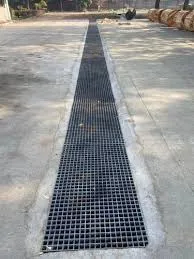
-
 Afrikaans
Afrikaans -
 Albanian
Albanian -
 Amharic
Amharic -
 Arabic
Arabic -
 Armenian
Armenian -
 Azerbaijani
Azerbaijani -
 Basque
Basque -
 Belarusian
Belarusian -
 Bengali
Bengali -
 Bosnian
Bosnian -
 Bulgarian
Bulgarian -
 Catalan
Catalan -
 Cebuano
Cebuano -
 China
China -
 China (Taiwan)
China (Taiwan) -
 Corsican
Corsican -
 Croatian
Croatian -
 Czech
Czech -
 Danish
Danish -
 Dutch
Dutch -
 English
English -
 Esperanto
Esperanto -
 Estonian
Estonian -
 Finnish
Finnish -
 French
French -
 Frisian
Frisian -
 Galician
Galician -
 Georgian
Georgian -
 German
German -
 Greek
Greek -
 Gujarati
Gujarati -
 Haitian Creole
Haitian Creole -
 hausa
hausa -
 hawaiian
hawaiian -
 Hebrew
Hebrew -
 Hindi
Hindi -
 Miao
Miao -
 Hungarian
Hungarian -
 Icelandic
Icelandic -
 igbo
igbo -
 Indonesian
Indonesian -
 irish
irish -
 Italian
Italian -
 Japanese
Japanese -
 Javanese
Javanese -
 Kannada
Kannada -
 kazakh
kazakh -
 Khmer
Khmer -
 Rwandese
Rwandese -
 Korean
Korean -
 Kurdish
Kurdish -
 Kyrgyz
Kyrgyz -
 Lao
Lao -
 Latin
Latin -
 Latvian
Latvian -
 Lithuanian
Lithuanian -
 Luxembourgish
Luxembourgish -
 Macedonian
Macedonian -
 Malgashi
Malgashi -
 Malay
Malay -
 Malayalam
Malayalam -
 Maltese
Maltese -
 Maori
Maori -
 Marathi
Marathi -
 Mongolian
Mongolian -
 Myanmar
Myanmar -
 Nepali
Nepali -
 Norwegian
Norwegian -
 Norwegian
Norwegian -
 Occitan
Occitan -
 Pashto
Pashto -
 Persian
Persian -
 Polish
Polish -
 Portuguese
Portuguese -
 Punjabi
Punjabi -
 Romanian
Romanian -
 Russian
Russian -
 Samoan
Samoan -
 Scottish Gaelic
Scottish Gaelic -
 Serbian
Serbian -
 Sesotho
Sesotho -
 Shona
Shona -
 Sindhi
Sindhi -
 Sinhala
Sinhala -
 Slovak
Slovak -
 Slovenian
Slovenian -
 Somali
Somali -
 Spanish
Spanish -
 Sundanese
Sundanese -
 Swahili
Swahili -
 Swedish
Swedish -
 Tagalog
Tagalog -
 Tajik
Tajik -
 Tamil
Tamil -
 Tatar
Tatar -
 Telugu
Telugu -
 Thai
Thai -
 Turkish
Turkish -
 Turkmen
Turkmen -
 Ukrainian
Ukrainian -
 Urdu
Urdu -
 Uighur
Uighur -
 Uzbek
Uzbek -
 Vietnamese
Vietnamese -
 Welsh
Welsh -
 Bantu
Bantu -
 Yiddish
Yiddish -
 Yoruba
Yoruba -
 Zulu
Zulu
frp materials for heat and nuclear power applications
FRP Materials for Heat and Nuclear Power Applications
Fiber Reinforced Polymer (FRP) materials have emerged as a promising solution in various industries, particularly in heat and nuclear power applications. Their unique properties, such as high strength-to-weight ratios, corrosion resistance, and thermal stability, make them suitable for environments that require durability and reliability.
In the context of nuclear power, FRP materials play a crucial role in the construction of components that must withstand extreme conditions, including high temperatures and radiation. Traditional materials, such as metals, often face challenges due to corrosion and radiation damage, which can compromise the integrity of structures over time. FRP, characterized by its non-metallic nature, is inherently resistant to many forms of corrosion, making it an ideal candidate for long-term use in nuclear facilities.
One compelling application of FRP in nuclear power plants is in the reinforcement of concrete structures. By incorporating FRP composites into concrete, the overall material strength can be significantly enhanced. This innovation not only extends the lifespan of critical components but also reduces the weight, allowing for easier handling and installation. Additionally, FRP-reinforced concrete structures can better withstand seismic activities, an essential consideration for nuclear power installations that may be located in earthquake-prone areas.
frp materials for heat and nuclear power applications

In terms of thermal stability, FRP materials can maintain their structural integrity under varying temperature conditions. The ability to function efficiently at elevated temperatures is vital in heat power applications, where components are often exposed to high thermal loads. Moreover, FRP's low thermal conductivity provides insulation benefits, contributing to improved energy efficiency.
The manufacturing processes for FRP materials also align well with contemporary environmental considerations, as many of these materials can be produced using renewable resources. The lightweight nature of FRP translates to lower energy consumption during transport and installation, further minimizing the environmental impact of power generation projects.
As the demand for energy continues to grow, the push for sustainable and resilient infrastructure is becoming increasingly imperative. The integration of FRP materials into heat and nuclear power applications not only enhances the performance and safety of power generation facilities but also supports broader goals of sustainability and environmental stewardship.
In conclusion, FRP materials represent a transformative approach in the realm of heat and nuclear power applications. Their exceptional properties address critical challenges faced by traditional materials, paving the way for innovations that prioritize safety, efficiency, and sustainability in the energy sector. As research and development in this field progress, we can anticipate even more applications and improvements that will further solidify FRP's position as a vital component in the future of energy production.









